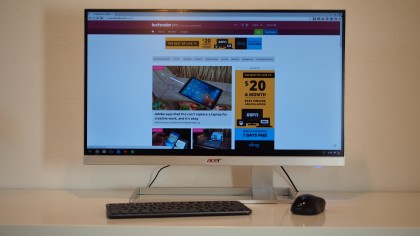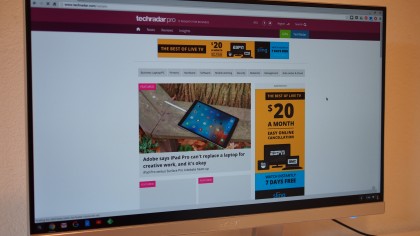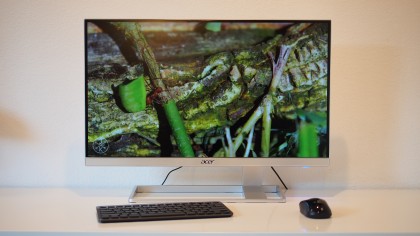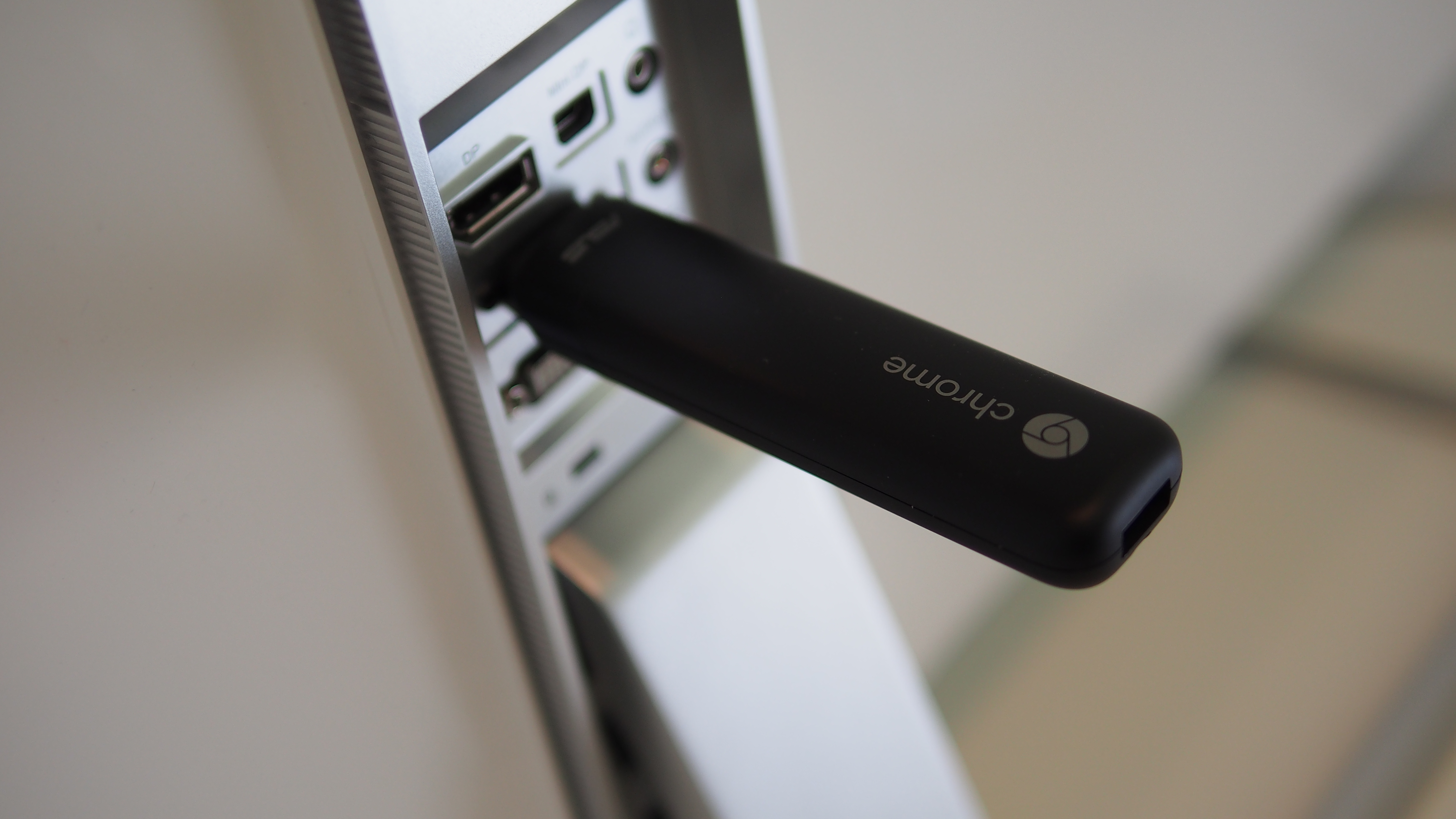Why you can trust TechRadar
The Chromebit comes in a single configuration, so that means you can't upgrade the processor, storage or memory on the unit. The only configuration you can make at the time of purchase is to choose whether you want the unit in Cacao Black or Tangerine Orange.

Here's how the unit that was sent to techradar pro was configured:
Specifications
- Processor: 1.8GHz Rockchip RK3288-C (quad-core, 28nm, ARM Cortex-A17 Harvard Superscalar)
- Graphics: Integrated Rockchip Mali T764 quad core
- Memory: 2GB RAM LPDDR3L
- Storage: 16GB eMMC
- Connectivity: 1x USB 2.0, 1x HDMI 2.0, power port, dual-band 802.11ac Wi-Fi, Bluetooth 4.0
- Weight: 0.17 pounds (75g)
- Dimensions: 4.84 x 1.22 x 0.67 inches (123 x 31 x 17mm)
Performance
Even though the Rockwell processor isn't as powerful as the Intel Core i5 Broadwell CPU found on Google's 2015 model of the Chromebook Pixel, I didn't encounter any performance lags or slowdowns in general computing tasks, web browsing or multimedia playback. The Rockchip RK3288-C, based on ARM's Cortex-A17 architecture, is extremely power efficient and a capable performer.

In my testing, 4K YouTube videos played without any stutter. Even though I can select 4K video playback on supported YouTube content, output to the Chromebit is limited to 1080p.
Similarly, music streamed perfectly from my Google Play Music library. To tax the processor, I had several Chrome browser tabs opened, Google Docs running and YouTube streaming 4K video content at 60 frames per second, and the Chromebit surprised me. Even on more limited hardware, performance was rock solid.
Benchmarks
Octane: 7,707
Mozilla Kraken: 5,458
SunSpider 1.0.2: 726.1
JetStream: 43.31
Performance of the Rockwell processor is in line with what you would expect on other Chrome OS products sporting ARM processors.
Asus used the same Rockwell chipset on its Chromebook Flip, a convertible Chrome OS notebook with a 360-degree hinge that transforms the device into a tablet. The Chromebook Flip's scores came in slightly lower than the Chromebit, with results of 6,795 for Octane, 5,447 for Kraken and 686 for SunSpider tests.

Still, these numbers are low when compared against devices with a more powerful dual-core Intel Core i5 or Intel Core i7 processor. The Core i5 version of Acer Chromebook 15 C910 scored 25,240 on Octane and 1,301.5 on Kraken, outperforming the Chromebit's quad-core ARM-based processor by a ratio of three to one. Google's first and second generation Chromebook Pixel notebooks also use Intel's Core i5 processor.
With the limitation of Chrome OS, choosing a device with the highest processor configuration may be overkill. Chrome OS doesn't support high CPU and GPU bandwidth applications, like Adobe Photoshop or Premiere Pro, so there is a significant diminishing return with the extra power.
Moreover, Intel's high-end notebook processors also make these systems expensive. The Acer Chromebook C910 is priced at $499 (£263, AU$686), while Google's 2015 model of the Chromebook Pixel starts at $999 (£799, AU$1,277).

Business users living within Google Apps will find that the Rockwell chip delivers more than enough power to work in Google Drive, Docs, Sheets and Slides. The Chromebit can also fluidly handle multitasking with multiple Chrome browser tabs. Home users looking to retrofit their television into a smart TV will be pleased that internet videos will stream with ease on the Chromebit.
